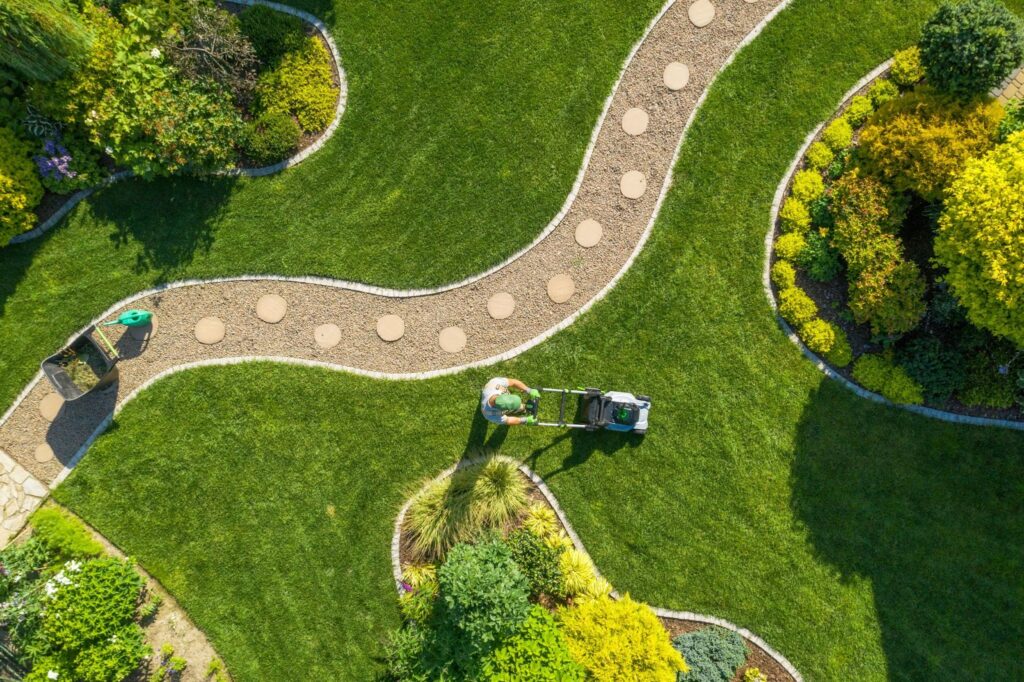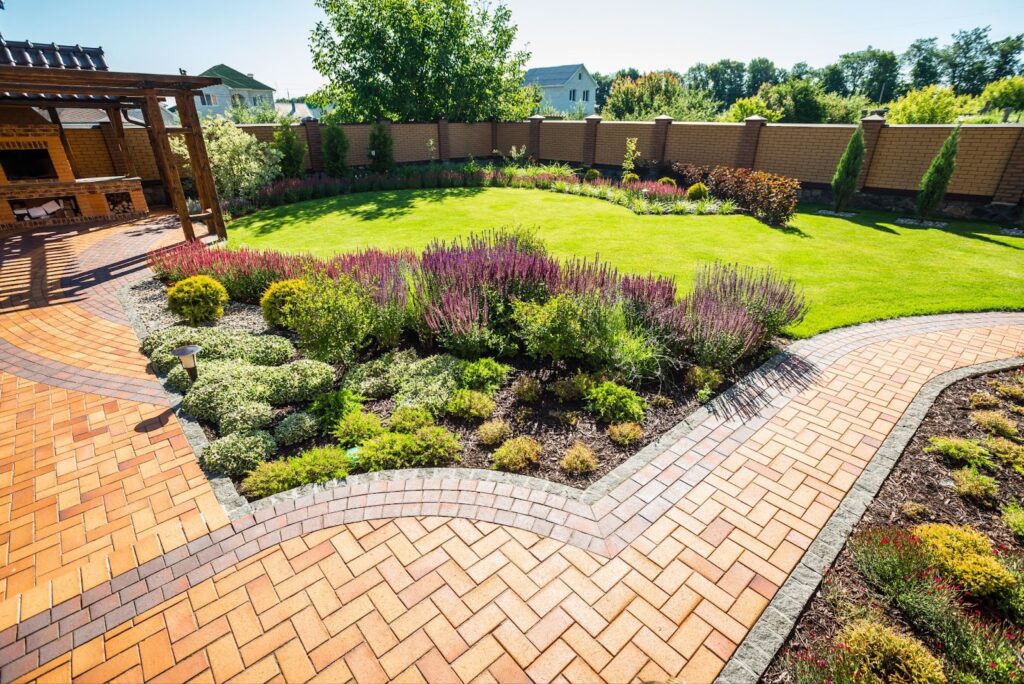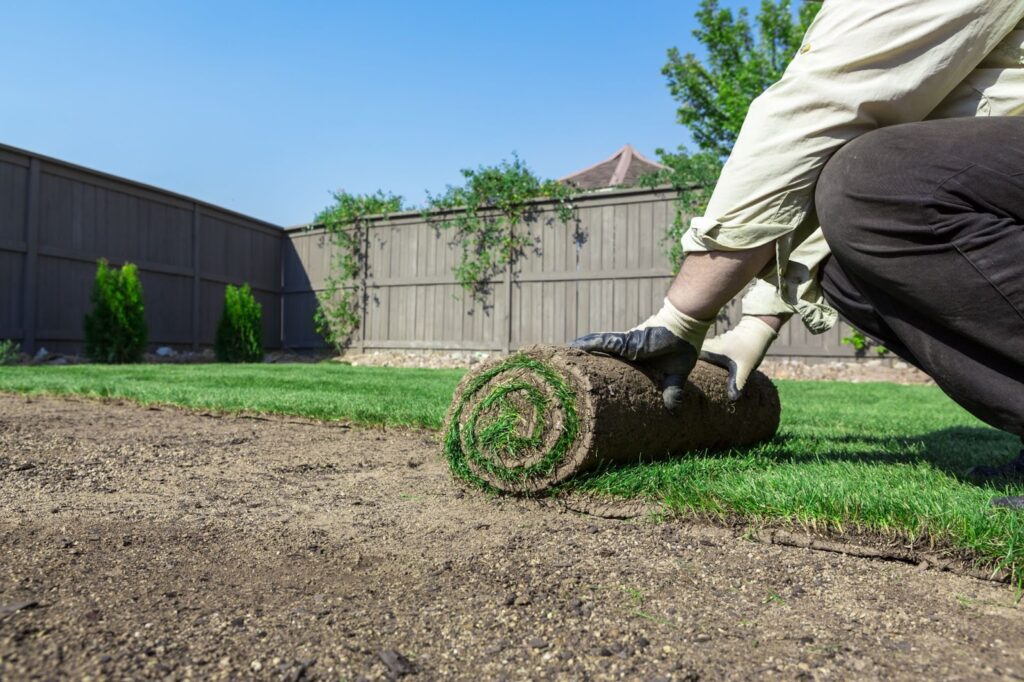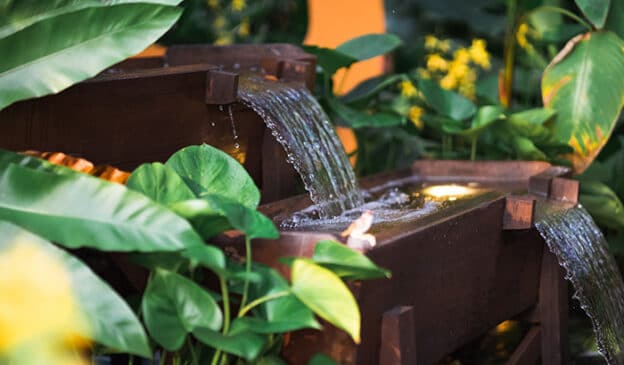Erosion control in landscaping refers to a set of practices and techniques to prevent or reduce soil erosion. Soil erosion can lead to the loss of valuable topsoil due to natural forces like rain, wind, water runoff, and human activities. Essentially, it’s the art and science of preserving your outdoor spaces from wearing away.
By implementing erosion control measures, you safeguard the structural integrity of your landscape and promote its long-term health and beauty.

Understanding Erosion
Erosion is a natural geological process that gradually removes soil and rock surfaces due to various environmental factors. In the context of landscaping, erosion refers to the loss of topsoil, which is the fertile upper layer of soil that supports plant growth. This process occurs when soil particles are detached and transported by wind, water, or gravity.
It’s important to note that erosion is a natural phenomenon, but it can lead to significant issues for your landscaping when it becomes accelerated or uncontrolled.
Causes of Erosion in Landscaping
Natural factors contributing to erosion in landscaping are primarily related to weather and geology.
- Rainfall: Heavy or prolonged rain can dislodge soil particles, leading to surface runoff. This runoff, if unchecked, can create channels or gullies in your landscape.
- Wind: Wind erosion occurs when strong winds carry away loose soil particles, particularly in arid or sandy areas. Over time, this can result in the exposure of roots and damage to plants.
- Gravity: Gravity plays a role in soil erosion on slopes or hilly terrain. Soil particles can slowly creep or slide downhill, especially when the landscape is not properly graded or stabilized.
While natural forces are significant contributors to erosion, human activities can exacerbate the problem. Some common human-induced factors include:
- Construction and Development: Clearing land for construction, roads, or new landscaping projects can disturb the natural vegetation and soil structure, making it more susceptible to erosion.
- Overgrazing: In areas with livestock or heavy foot traffic, the constant trampling and grazing of vegetation can lead to soil compaction and erosion.
- Improper Land Use: Poor land management practices, such as deforestation, mining, and improper drainage, can accelerate erosion by disrupting natural processes that help maintain soil stability.
As topsoil is eroded, it takes with it essential nutrients that plants rely on for growth. This can result in poor plant health and decreased yields in gardens and landscapes.
Erosion can also transform your once-beautiful landscape into a patchy, uneven terrain filled with unsightly gullies and bare spots.
Uncontrolled erosion can lead to property damage, including damage to buildings, roads, and infrastructure, and increased maintenance costs. Soil sediment carried away by erosion can find its way into nearby water bodies, causing water pollution and harming aquatic ecosystems.
Erosion Control Techniques
Various effective methods are available when it comes to safeguarding your landscape from erosion. These erosion control techniques can be broadly categorized into vegetative, structural, and innovative approaches. Each serves a unique purpose in protecting your outdoor haven.
Vegetative Erosion Control
Plant Selection
The right plant selection can be your landscape’s best defense against erosion. When choosing plants for your erosion control strategy, consider the following:
- Native Species: Native plants are adapted to local conditions, making them more resilient and less disease-prone.
- Deep-Rooted Varieties: Opt for plants with extensive root systems that anchor the soil, reducing erosion risk. Trees, shrubs, and certain grasses are excellent choices.
- Ground Covers: Low-lying ground covers, like creeping thyme or native grasses, create a protective mat over the soil, reducing surface runoff and erosion.
Grass Seeding and Sodding
Grass is a classic choice for erosion control due to its dense root structure and ability to hold soil in place. The process involves:
- Seeding: Broadcasting grass seed over exposed soil and ensuring proper watering and care until it establishes.
- Sodding: Laying pre-grown grass sod directly onto the soil for an instant protective cover.
Structural Erosion Control

Retaining Walls
Retaining walls are solid structures built to hold back soil on sloped landscapes. They’re effective in preventing erosion by:
- Stabilizing Slopes: Retaining walls create terraced levels, reducing the steepness of slopes and minimizing the risk of soil erosion.
- Diverting Water: Properly designed retaining walls can divert water from vulnerable areas, preventing excessive runoff.
Terracing
Terracing involves creating flat, step-like platforms on a slope to control soil erosion. It’s beneficial for:
- Slowing Water Flow: Terraces break up water flow down a slope, allowing it to infiltrate the soil instead of causing erosion.
- Planting Opportunities: Each terrace level can host vegetation, further enhancing erosion control.
Silt Fences
Silt fences are temporary barriers made of geotextile fabric that control sediment runoff during construction or landscaping activities by:
- Filtering Sediment: They trap sediment-laden runoff, allowing water to pass through while retaining soil particles.
- Protecting Water Bodies: Silt fences prevent soil and debris from entering nearby water bodies, reducing environmental impacts.
Erosion Control Blankets and Mats
Erosion control blankets and mats are rolled-out materials made of natural, synthetic, or combination fibers. They are secured to the ground and offer several benefits, including:
- Immediate Protection: These blankets provide instant coverage and stabilization for exposed soil.
- Erosion Resistance: They protect against wind and water erosion, making them versatile tools for erosion control.
Bioengineering Techniques
Bioengineering techniques harness the power of living plants and natural materials to combat erosion. These techniques include:
- Live Staking: Planting live cuttings or stakes of woody vegetation along stream banks or slopes to reinforce soil stability.
- Coir Logs: Using coconut fiber logs or coir rolls to slow water flow and encourage vegetation growth.
- Rock Toe Protection: Placing rocks or logs at the base of slopes to reduce erosion and enhance stability.

Sustainable Erosion Control Practices
Sustainable erosion control practices prioritize eco-friendly and long-lasting solutions, such as:
- Rain Gardens: Creating depressions in your landscape to capture and manage stormwater runoff while promoting plant growth.
- Permeable Paving: Using permeable materials for driveways and walkways to allow water to infiltrate the ground instead of contributing to runoff.
Each of these erosion control techniques has its place in your landscaping toolkit. The key is selecting the right methods and combining them effectively to create a comprehensive erosion control plan that suits your unique landscape needs.
By employing these methods, you’ll protect your property and contribute to a more sustainable and resilient outdoor environment.
Hiring a Professional
While many erosion control efforts can be tackled as DIY projects, there are instances when bringing in a landscaping expert is a prudent choice.
- Complex Landscape: If your landscape features intricate designs, multiple levels, or extensive hardscaping elements, a professional’s expertise can ensure proper erosion control without compromising aesthetics.
- Severe Erosion: When erosion has already caused significant damage, it’s time to call in the experts. They can assess the situation and implement advanced erosion control solutions.
- Large-Scale Projects: Professional landscapers have the equipment and experience to control large-scale erosion for expansive properties or commercial landscapes.
Choosing the right landscaping expert is essential for the success of your erosion control project. Here’s a step-by-step guide to help you make an informed decision:
- Start by researching local landscaping professionals and seeking referrals from friends, neighbors, or online reviews. Word-of-mouth recommendations can be invaluable.
- Ensure the professional is licensed and insured. Licensing indicates they meet local regulatory requirements, while insurance protects you from liability in case of accidents.
- Review their portfolio and inquire about their experience with erosion control. A seasoned expert will have a track record of successful projects.
- Request references from past clients and contact them to inquire about their experience and satisfaction with the landscaper’s work.
- Obtain written estimates from multiple professionals to compare costs and services. Avoid vague or verbal agreements.
- Invite potential contractors to visit your property for an assessment. Their on-site evaluation will help them provide a more accurate estimate.
- Once you’ve chosen a professional, ensure that all project details, timelines, costs, and responsibilities are outlined in a written contract. This document protects both you and the contractor.
Ultimately, selecting the right professional ensures that your erosion control efforts are carried out efficiently and effectively, providing long-lasting protection for your landscape.

Expert Erosion Control and Landscaping With LaytonScape
In your journey to safeguard your landscape from erosion while enhancing its beauty, the right team can make all the difference. When considering who to trust with your landscaping needs, there’s no better choice than LaytonScape.
LaytonScape is dedicated to turning your landscaping dreams into reality. Our meticulous approach starts with thoroughly assessing your property’s unique characteristics, ensuring that every aspect of your landscape is considered. From there, we seamlessly blend nature’s beauty with hardscape elements to create a harmonious and resilient outdoor space.
Whether you’re planning a simple flower bed or a comprehensive, integrated master plan, LaytonScape’s friendly experts have the expertise and commitment to bring your vision to life. With a focus on integrity and a dedication to excellence, you can trust us to tackle your erosion control and landscaping needs.
Don’t hesitate to take the first step towards a stunning, erosion-resistant landscape. Contact LaytonScape today, and set the wheels in motion for a more beautiful, protected outdoor environment.



